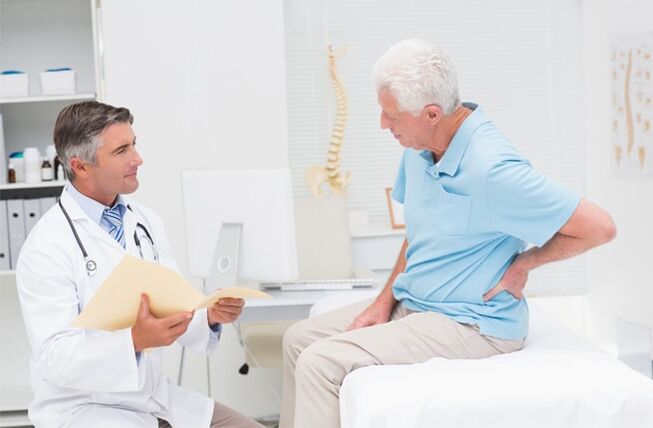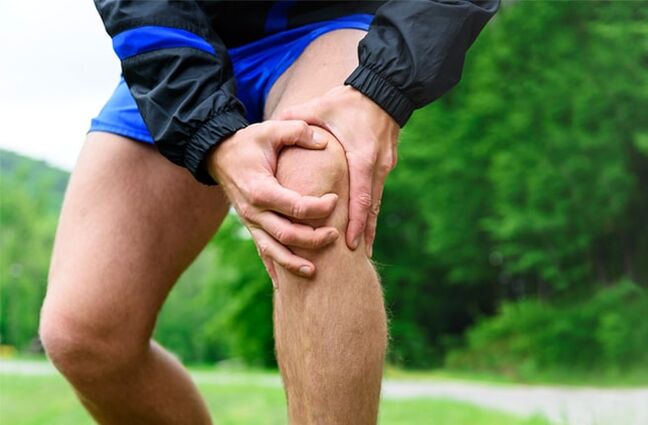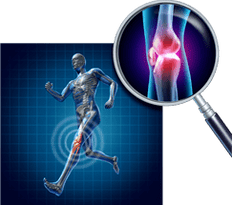Arthrosis (osteoarthrosis or deformation of osteoarthrosis (prayer), or deformation of arthrosis)- Joint disease, in which the cartilage of the joints is affected early, the muscles, ligaments, nerves, and bone tissue, are included in the pathological process.
Arthrosis is a disease that develops for a variety of causes.These include metabolic disorders, injuries, intoxication, etc.
Patients usually call "arthrosis" of any joint disease where pain, mobility restrictions and other unpleasant sensations in an area of one or more joints are noted, which is not always true.Osteoarthritis and the pain associated with it develop as a result of "aging" joints, due to the effects of various negative factors, however, the cause of articular pain can be infection and injury, and in these cases we talk about other pathologies.
Statistics

Up to 70% of patients in the appointment of a general practitioner, therapist, neurologist, surgeon, rheumatologist complained of articular pain.Often, this is the pain in the lower and in the large joint area (knee, hip).Worldwide, and in Russia in particular, up to 70% of cases of long inability to fall on osteoarthritis.There are many patients - up to 10% of those who have made up doctors as a result of advanced arthrosis receiving defects and needing continuous help.Arthrosis is one of the main reasons for a person's premature departure from full social life, in the second statistics only for coronary heart disease.
The probability of developing arthrosis increases with age: in people over 50, it occurs in 27% of cases, in older people older than 70, the prevalence is 97%, due to age -related loads in the joints and the end of their normal function.
Causes and Development
The main factor in the development of arthrosis is a violation of articular cartilage nutrition, leading to its destruction.It is not very important, as a result (overweight, professional sports, work features, hormone disruption, congenital joint defects, etc. -more), the results are the same: the results are:
- In joint cartilage, changes begin, resulting in loss of elasticity;In cartilage thickness, microcracks appear;
- The supply of blood to the joints is disrupted, the production of joint fluid is reduced, the mechanic jointly changes;
- Then all the structure together, the muscles adjacent, and the nerve endings are involved.
The degenerative disorders listed lead to the development of arthrosis symptoms, and the disease is "starting" at this time when a continuous mechanical load becomes transendental for the joints (or joints) and triggers its destruction.
Symptom

Unlike other joint pathologies, arthrosis has grown for years, for a long time and is not visible to humans.At this time when the body marks the problem in the joints with severe pain, the pathological process in it has been launched.
Pain is a major symptom of arthrosis (osteoarthrosis), in the early stages of less, weak, more comparable to discomfort.Unpleasant sensations in the joints occur after the load occurs independently, without medical or medical intervention, but they quickly become real and limit the normal human mobility.
Pain can occur at rest or at the beginning of the movement ("starting"), for example, in the morning after sleep or after sitting long during the day in one position, while moving, they pass.Arthrosis is also characterized by every night's rest, which also decreases quickly with the onset of motor activity.Patients found by joint problems usually say that to eliminate unpleasant sensations, "knead bone", "wake up joints", which, in general, are quite accurate.
Pain arises not only due to joint disorders itself.When all components of the joints, muscles and ends of the nerves are involved in the process, the pain becomes diverse and painful: "shooting" along the nerves that spread along the muscles.The supply of blood to the joints, nerves, muscles is disrupted, degenerative changes quickly occur in it.
Temporary or continuous restrictions on joint mobility (contraction) develop due to serious pathological changes in the articular and muscle tissue.For example, with arthrosis of the hip joint, shortening the limbs, the "skew" of the pelvis and the curvature of the spinal column occurs.
The deficiency in the joints in the early stages is almost invisible, but as the disease develops as it moves, it becomes fixed.These symptoms are psychologically concerned with patients with arthrosis more than pain, as they indicate serious disorders, body aging and the musculoskeletal system in particular.
In later stages arthrosis, defective joints, which are associated with the loss of the curvature of all articular surfaces, bone growth, decreased joint fluid, and joint subluxation.
Phase
Depending on the severity of the symptoms, several stages of osteoarthrosis are distinguished.

In the first stage, there is no pain in rest and during moderate loads, they only appear after high loads (fitness, weight transplantation, walking) or after a long static position.One does not experience restrictions and difficulties in movement.Drug treatment is not required.
In the second stage of pain, mentioned and fixed, quickly arises under the influence of provocative factors (walking, physical activity), do not pass on their own.Patients are limited, certain joint movements - knees, hips and others are limited.Medical assistance is required, the treatment regimen should be prescribed, including drugs and non -Drug methods.
In the third stage, the patient moves with difficulty, requires persistent care, painful pain.As a rule, surgical treatment (endoprosthetics) and large physiotherapy -is required to restore quality of life.
Symptoms of osteoarthritis appear at a young age, and in this case, it is necessary not to ignore it, but to consult a doctor.Timely treatment will support the normal functioning of the joints and help to prevent the rapid progress of the disease.




























